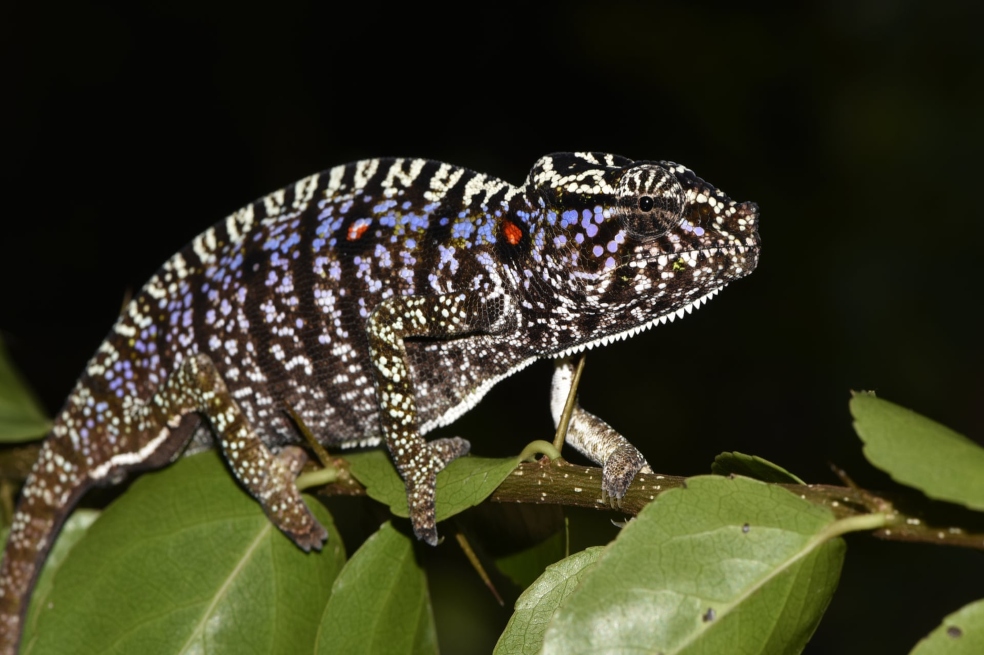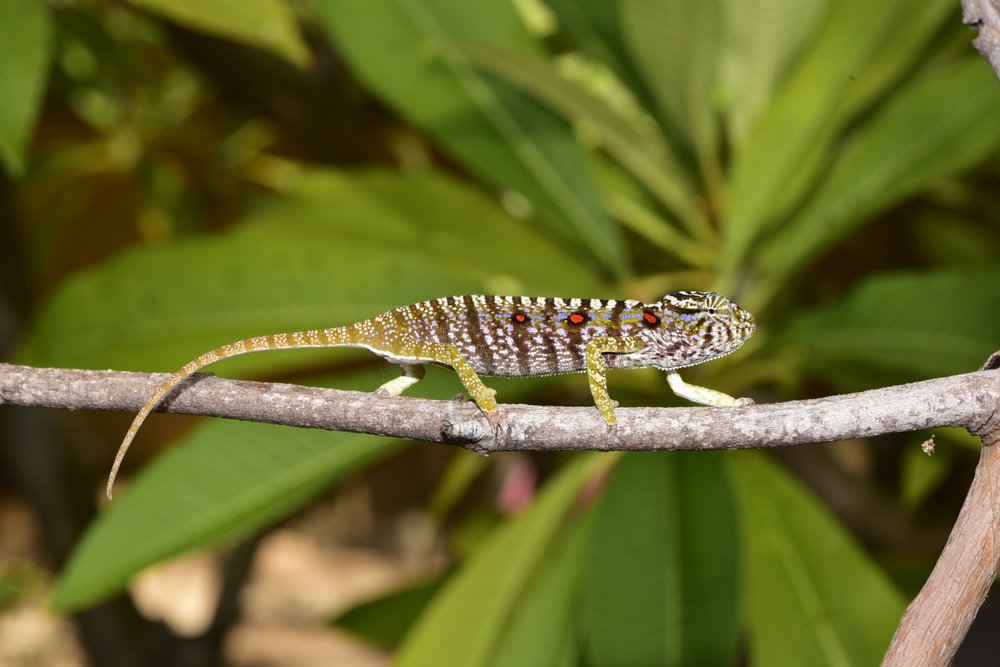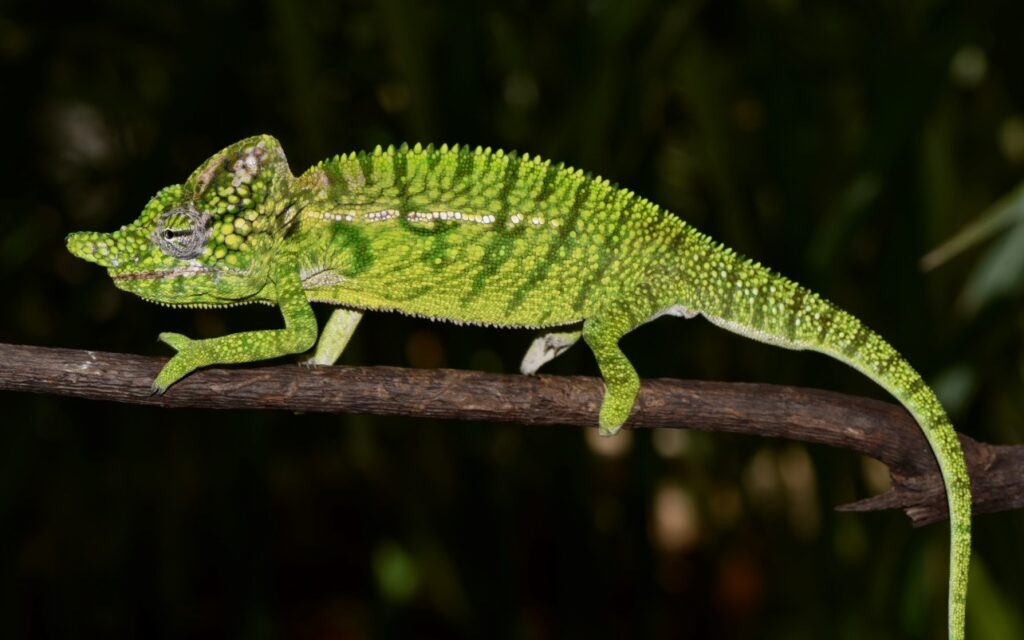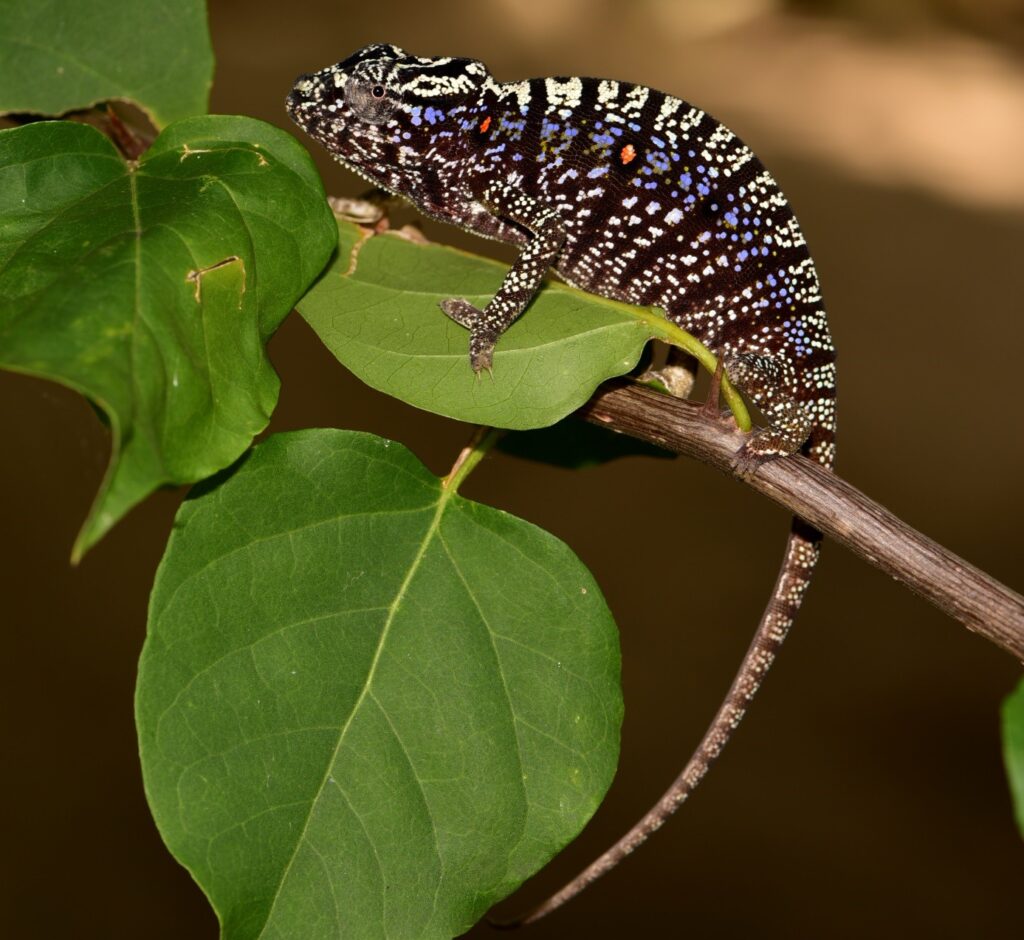
This chameleon’s camouflage is so outstanding that it hasn’t been seen in over a century. Until now, that is.

During a trip to the northwest of the African island country, scientists from Madagascar and Germany discovered several live individuals of Voeltzkow’s chameleon.
In this movie, you can see the first shots of the extinct chameleon species.
Genetic study revealed that the species is closely linked to Labord’s chameleon, according to a paper published in the journal Salamandra by a team led by experts from the Bavarian Natural History Collections ZSM.
The Labord’s chameleon (Furcifer labordi) is a semelparous chameleon that is found only in Madagascar. It has the lowest lifetime ever documented for a four-legged vertebrate, lasting barely 4 to 5 months. In that regard, the Voeltzkow’s chameleon isn’t much different.

Both reptiles, according to scientists, only survive during the rainy season, emerging from eggs, swiftly expanding, clashing with rivals, mating, and then dying in a matter of months.
“These critters are practically vertebrates’ mayflies,” said Frank Glaw, the ZSM’s reptile and amphibian curator.

The female of the species – which had never been seen before – developed unusually vibrant patterns during pregnancy, while seeing males, and when feeling anxious, according to the research team.
The habitat of the Voeltzkow’s chameleon, according to biologists, is threatened by deforestation.

Even the finest camouflage can’t hide from deforestation.
